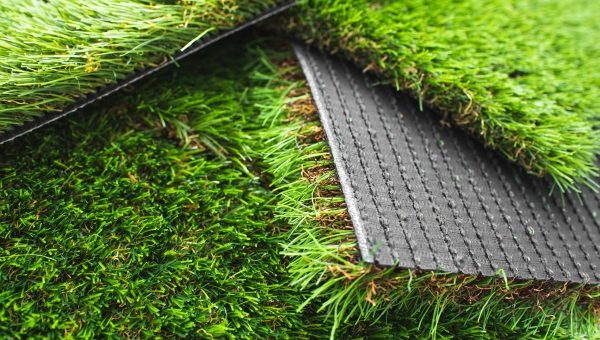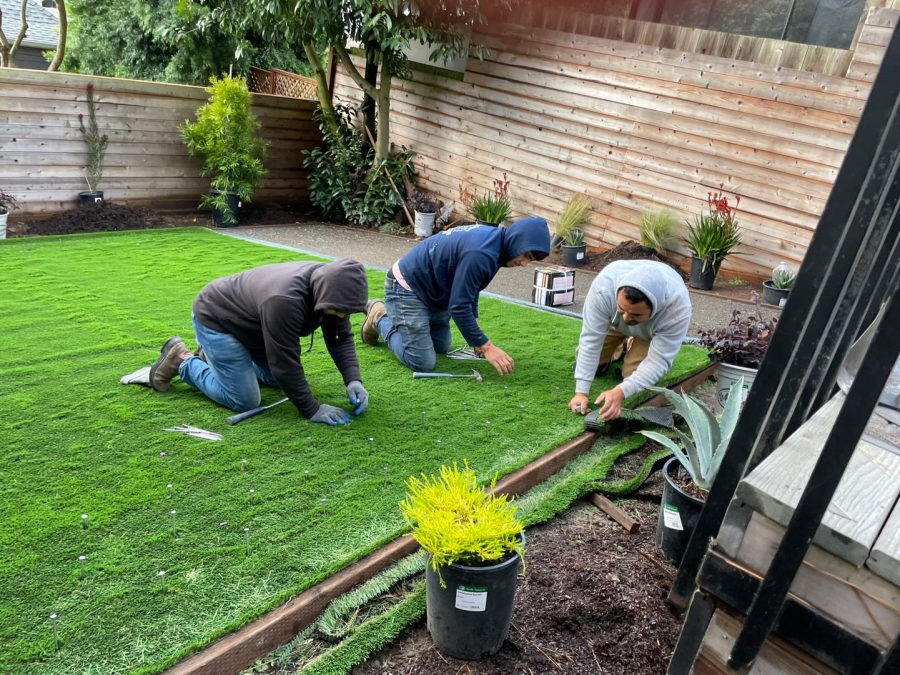Highly-Ranked Phoenix Turf Companies Providing Synthetic Grass Solutions
Highly-Ranked Phoenix Turf Companies Providing Synthetic Grass Solutions
Blog Article
Delve Into the Environmental Advantages of Opting for Artificial Grass Solutions
The fostering of synthetic grass solutions presents a compelling opportunity to deal with pressing environmental difficulties. By considerably lowering water usage and lessening the application of damaging chemicals, these choices not just advertise sustainable landscaping but additionally secure regional environments. The reduced carbon impact associated with lowered upkeep activities contributes to an extra lasting method to land management. Nonetheless, the ramifications of these advantages expand beyond plain conservation initiatives, questioning regarding their long-term influence on habitat conservation and general ecological balance. Checking out these dimensions reveals an intricate interaction worth taking into consideration.
Water Preservation Benefits
One of the most considerable advantages of synthetic grass is its capacity to preserve water. Traditional lawn yards require significant irrigation, especially in areas prone to drought or water limitations. On the other hand, synthetic grass does not need watering, significantly minimizing the total need for water sources. This feature is specifically useful in deserts where water deficiency is a pressing issue.
By removing the need for normal watering, synthetic grass adds to sustainable landscape techniques and helps mitigate the environmental effect of too much water consumption. In addition, the conservation of water encompasses the decrease of runoff, which can cause soil erosion and waterway contamination.
Additionally, the setup of artificial grass permits towns and home owners to allocate water resources more effectively, concentrating on crucial uses such as drinking water and agriculture. The shift towards synthetic grass not only promotes accountable water usage however likewise straightens with broader environmental objectives aimed at protecting natural sources.
As communities increasingly prioritize sustainability, the water conservation advantages of synthetic grass present an engaging case for its adoption in business and property landscaping projects.
Reduced Chemical Use
The transition to artificial lawn considerably decreases the reliance on chemical therapies frequently used in all-natural lawn maintenance. Conventional turf management normally includes the application of plant foods, herbicides, and pesticides to advertise growth and control pests. These chemicals can present risks to human wellness, regional wild animals, and the atmosphere, adding to dirt and water contamination.
In comparison, fabricated turf eliminates the requirement for these harmful compounds. By lessening the launch of artificial substances right into the ecosystem, man-made turf promotes healthier soil and water systems.
Furthermore, the absence of chemical overflow linked with synthetic grass installations aids secure regional rivers from contamination, sustaining water life and preserving biodiversity. Arizona turf. As communities increasingly prioritize lasting techniques, selecting artificial turf presents a practical solution that straightens with environmental preservation objectives. With this shift, building proprietors can appreciate lavish environment-friendly spaces without compromising ecological health and wellness, leading the way for a more sustainable future
Lower Carbon Impact

Furthermore, the installment of synthetic grass can result in substantial water conservation. Natural lawns need considerable amounts of water for watering, which not only contributes to the carbon footprint related to water extraction and treatment however likewise pressures regional water sources. In contrast, synthetic grass needs marginal maintenance, requiring no watering, consequently significantly minimizing water use and its associated energy prices.
In addition, the durability of synthetic grass adds to its lower carbon influence. With a life-span of approximately 15 years or even more, the need for frequent substitutes is decreased, leading to much less waste and reduced power intake in production and dealing with conventional turf alternatives. On the whole, synthetic grass provides a sustainable option for environmentally aware landscape design.
Habitat Conservation
Environment preservation is an important factor to consider in the debate over landscape design selections, particularly when contrasting artificial turf to all-natural yard. All-natural lawn lawns often require substantial maintenance, consisting of using fertilizers, chemicals, and herbicides, which can detrimentally impact neighborhood communities. These chemicals can seep right into the dirt and waterways, damaging native flora and fauna and disrupting local environments.
In contrast, synthetic grass presents a chance to lower the eco-friendly impact of landscape design. By deciding for synthetic grass, home owners can lessen the disturbance of natural habitats associated with standard lawn treatment methods. Synthetic lawn gets rid of the requirement for dangerous chemicals, thus safeguarding nearby wildlife and preserving the stability of surrounding ecological communities. The installation of man-made turf can lead to the conversion of previous grass areas right into even more biodiverse landscapes, such as pollinator yards or native plant locations, which can support local wild animals.
Ultimately, the shift to fabricated turf not just conserves water and lowers upkeep efforts yet additionally fosters a much more unified connection in between human tasks and the natural surroundings, promoting environment conservation while doing so.
Long-Term Sustainability
Long-lasting sustainability is a critical element in evaluating the advantages of man-made turf over traditional lawn lawns. One of one of the most significant advantages of man-made turf is its sturdiness; it can last approximately 15-20 years with minimal maintenance, whereas natural turf needs constant reseeding and substitute. This longevity reduces the need for continuous sources, such as water, plant foods, and chemicals, which are essential for keeping a healthy turf lawn.
In addition, synthetic grass adds to a reduction in my response carbon discharges related to grass treatment devices. Standard yards usually need gas-powered lawn mowers, leaners, and blowers, all of which add to air pollution. Turf installation phoenix az. In contrast, man-made turf eliminates the requirement for such devices, advertising a cleaner environment
Additionally, the manufacturing of synthetic grass increasingly makes use of recycled products, boosting its sustainability profile. you could try this out As makers take on environmentally friendly techniques, the environmental impact of synthetic grass remains to reduce.

Final Thought
The fostering of synthetic grass options presents substantial environmental advantages, consisting of substantial water preservation, reduced dependence on hazardous chemicals, and a reduced carbon footprint. Moreover, man-made lawn help in maintaining natural environments by decreasing land disturbance and promoting long-lasting sustainability through using resilient products. Collectively, these factors emphasize the possibility of synthetic grass to contribute favorably to environmental health and offer a viable choice to standard landscaping techniques in a significantly resource-conscious globe.
In contrast, fabricated turf does not require watering, dramatically lowering the total need for water resources. By lessening the launch of artificial substances Look At This into the community, artificial turf advertises much healthier soil and water systems.
Additionally, the installment of fabricated grass can result in considerable water conservation. In contrast, synthetic grass requires marginal maintenance, calling for no watering, consequently dramatically minimizing water usage and its connected power costs.

Report this page